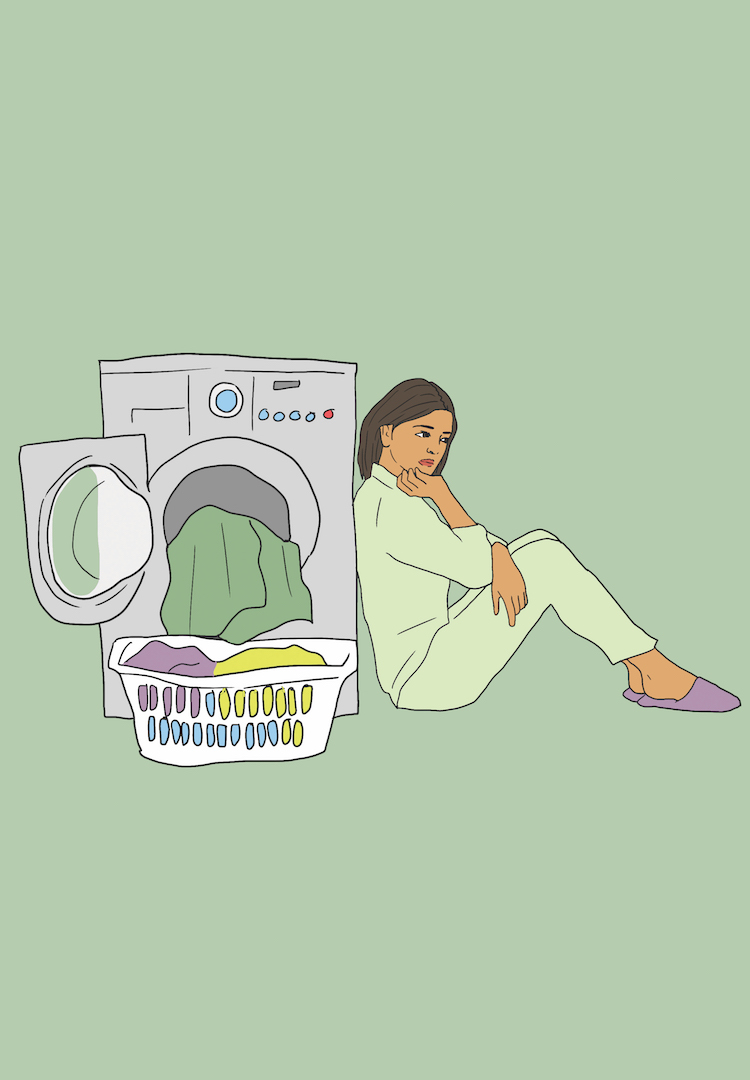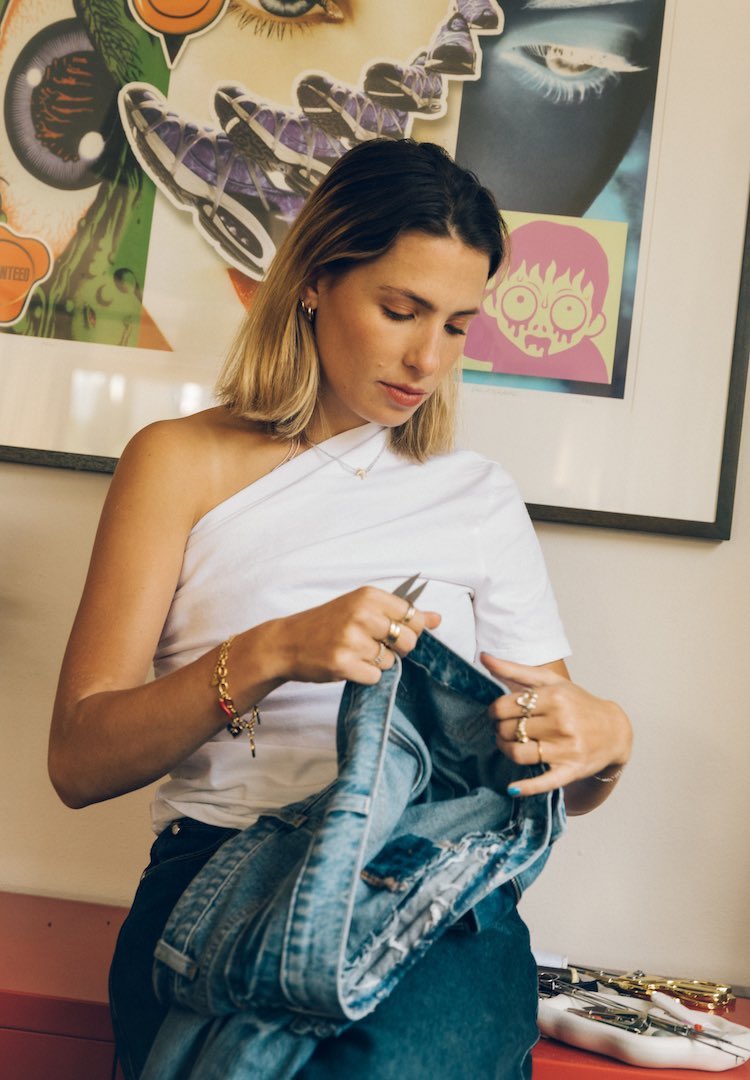A sustainable guide to garment care
Illustration by Twylamae
Words by Hannah Cole
Wash wisely.
Wash wisely.
“It’s not easy being green,” a wise frog once opined. Kermit was 100 per cent right.
There’s no IKEA-like, one-size-fits-all approach when it comes to being ‘green’. If only there were, life would be so much simpler. Instead, sustainability calls for a little more individual research and personalisation – finding the optimal ways to integrate clean living into your life. This can seem an insurmountable block for those of us with a full work schedule and an even fuller social calendar. How do we fit in time to save the earth?
While dramatic change is needed in the world, it’s much less scary if we take baby steps. Next on the agenda: garment care.
According to Fashion Revolution, 25 per cent of a garment’s carbon footprint comes from customer care. The remaining 75 per cent may rest on the manufacturer, but one quarter is no gure to ignore. Rigorous research before purchasing from a lauded sustainable label only gets you so far; we still have a responsibility. It’s a duty of care if you will. We’re the custodians of the wardrobe, with garments entrusted to us to care for and use correctly.
Microfibres have been the topic of conversation for a hot minute, and for a valid reason. Synthetic fabrics shed microplastic fibres during the wash cycle, accounting for the majority of the plastics in our ocean. A study conducted by the University of Plymouth has shown that more than 700,000 fibres could be released during each wash. I’ll leave the maths to you, but that’s a shit- tonne of plastic seeping out of our own homes, regardless of how small the pieces are.
We’re hell-bent on cleaning up the straws from our beaches, but what can we do about the micro fibres?
Wash less (and use cold water)
The stink test has never been more acceptable: only wash when it is actually required. No stains or scents? You’re good to go for round two (or three, or four if you’re lucky). As an added bonus, fewer washes also reduces fading and shrinkage. Wash a full load every time to reduce water wastage and minimise your personal carbon dioxide emissions.
Purchase natural fibres
Since it’s synthetics – i.e. fabrics made from plastics – that are causing this tidal wave of terror, the no-brainer is to stick to natural fibres instead. Look further afield than cotton and scout out linen, hemp and bamboo wardrobe staples. Let me assure you, there’s no shortage of options.
I’ll admit that it becomes a little trickier with a closet full of vintage and drawers of polyester activewear, so…
Invest in a GUPPYFRIEND
It’s not an option to just sit tight and wait for washing machine manufacturers to create an in-built micro fibre-capturing device. Looking at the current state of world business, I wouldn’t hold my breath in anticipation. So, the GUPPYFRIEND it is. This washing bag is designed to contain all your synthetic garments during the wash cycle and capture the fibres before they escape. It’s big, it’s easy to use, and it might just make a world of difference. And it’s thankfully now available for purchase in Australia via Patagonia and Flora & Fauna.
Or try a Cora Ball
The other at-home option is the Cora Ball. It’s kind of cute looking and doubles as an ocean-protecting device. Pop the ball in the washing machine with your load and watch it collect the fuzz swirling around. Gather the fluff up post-wash to dispose of appropriately (in the bin). Simple.
A critical side note here: be wary of any garments made from recycled plastics. Yes, it’s incredible to recycle and transform waste into something great and new. Yes, we should still be supporting the labels doing so. But it’s still plastic. It still sheds micro fibres, no matter the efforts of the brand. Not all battles can be won in a day so, as with the rest of your wardrobe, pay attention to the care label and look at the fabric composition.
Make the decision to wash wisely and responsibly, and we’ll be one step closer to a clean future.
This article was originally published in Fashion Journal 188. You can read it here.













